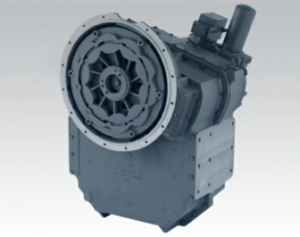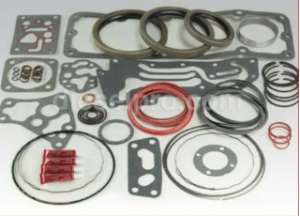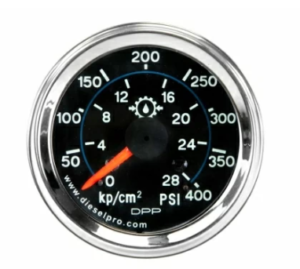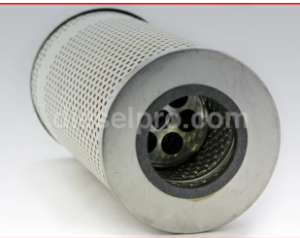
Servicing your Twin Disc MG520 Marine Gear doesn’t just preserve your transmission—it protects your entire vessel’s propulsion system. The MG520 is engineered for rugged use and long operating hours, but routine maintenance is essential for achieving the long lifespan and optimal performance it’s designed to deliver.
This section offers an in-depth maintenance overview, including a routine inspection checklist, fluid servicing procedures, and environmental best practices. Whether you’re maintaining a commercial tugboat, a fishing vessel, or an offshore supply ship, this guide will give you the tools and structure needed to protect your investment and avoid unexpected breakdowns at sea.

Parts Catalog for Twin Disc MG520 Marine Transmissions
Rebuilt Twin Disc MG520 Marine Transmissions
Plate Kit For Twin Disc MG520 Marine Transmission
Gasket Kits For Twin Disc MG520 Marine Transmission
Routine Inspection Checklist For Twin Disc MG520 Marine Gear
The first line of defense in maintaining the MG520 is a consistent, structured inspection routine. Performing these checks at recommended intervals helps you identify issues early—before they result in major damage or downtime.
Below is a comprehensive checklist of what to inspect, when, and why.
1. Fluid Level and Quality Checks
When to Check:
- Before each engine startup
- Every 8–10 hours of operation
How to Check:
- Locate the dipstick or sight glass on the MG520 housing.
- Wipe the dipstick clean, reinsert, and check the oil level.
- Look for signs of foaming, discoloration, or contamination.
Signs of Trouble:
- Low oil level: Could indicate a leak or excessive consumption.
- Milky oil: Sign of water contamination, possibly from a failed oil cooler.
- Dark, burnt oil: Indicates overheating, slippage, or delayed changes.
Why It Matters:
Proper oil level and quality directly affect lubrication, cooling, and clutch engagement. Even small deviations can result in performance issues or internal wear over time.
2. Visual Inspection for Leaks, Wear, and Corrosion

When to Check:
- Every 50 hours of operation
- At each routine oil change
What to Inspect:
- Oil seals around the input and output shafts
- Gasket joints at the gear case and inspection covers
- Oil cooler lines and hydraulic fittings
- Mounting bolts and brackets
- Exterior casing for corrosion or impact damage
How to Spot Issues:
- Use a flashlight and inspection mirror to check hard-to-see areas.
- Look for oil seepage, dirt accumulation, or corrosion spots.
- Wiggle hoses and check for soft spots or cracking.
Signs of Trouble:
- Even a small leak can cause pressure loss or fluid starvation.
- Corrosion can compromise the structural integrity of the case over time.
- Loose bolts may result in vibration or misalignment.
3. Monitoring Engagement/Disengagement Performance
When to Check:
- During every engine start-up
- After every oil change or pressure adjustment
What to Monitor:
- Gear shifts should be immediate, smooth, and free from hesitation.
- Shifting into forward and reverse should not produce harsh clunks, long delays, or RPM surges.
- Use audible and tactile feedback—listen and feel for engagement.
Diagnostic Tips:
- A noticeable delay in engagement may indicate low oil pressure or clutch wear.
- A harsh shift could point to improper clutch pack clearance or oil viscosity issues.
- Slipping under load suggests clutch glazing, fluid contamination, or pressure loss.
Optional Testing:
- Use a hydraulic pressure gauge connected to test ports to confirm that clutch engagement pressures are within Twin Disc specifications.
- Monitor oil temperature using onboard gauges or portable infrared thermometers to prevent overheating during sea trials.
Fluid Change Procedure For Twin Disc Marine Gear

Transmission fluid plays a critical role in cooling, lubrication, and hydraulic clutch actuation within the MG520. Contaminated or degraded oil can cause premature clutch failure, gear scoring, and reduced transmission efficiency.
Changing the oil at the correct interval is one of the most important maintenance steps you can perform.
1. Recommended Oil Type and Capacity
The MG520 requires high-quality, marine-grade lubricants that meet Twin Disc standards.
Oil Type:
- SAE 30W or 40W non-detergent transmission oil
- Must be API CF or better
- Synthetic or conventional base oils are acceptable if they meet spec
Viscosity Recommendations:
- Use SAE 30W in cooler climates or moderate load vessels
- Use SAE 40W in tropical environments or under heavy load conditions
What Not to Use:
- Engine oil with detergents (can foam or damage clutch plates)
- Automotive transmission fluid (not rated for heavy marine loads)
Oil Capacity:
- Approximate oil capacity ranges from 5 to 6 U.S. gallons (18.9 to 22.7 liters)
- Capacity may vary depending on:
- Cooler configuration
- Oil line length
- Optional accessories like PTOs or shaft brakes
2. Draining and Refilling Process
Before You Begin:
- Run the engine at idle for 5–10 minutes to warm the oil.
- Shut down and follow lockout/tagout procedures.
- Prepare absorbent pads, spill trays, and proper PPE.
Step-by-Step Drain Process:
- Locate the Drain Plug:
- Found on the lowest part of the gear housing or sump.
- Found on the lowest part of the gear housing or sump.
- Position a Catch Pan:
- Use a container large enough for at least 7 gallons.
- Place absorbent pads underneath to catch drips.
- Remove the Plug:
- Use a wrench or socket with proper leverage.
- Allow all oil to fully drain. This may take 10–20 minutes.
- Inspect the Drain Plug:
- Check for metal shavings or sludge on magnetic plugs.
- Clean thoroughly before reinstalling.
- Replace the Plug:
- Use a new crush washer or thread sealant.
- Torque to manufacturer spec to avoid overtightening.
Refilling Process:
- Use a Clean Funnel:
- Pour oil into the fill port or breather cap on the top of the housing.
- Pour oil into the fill port or breather cap on the top of the housing.
- Fill Slowly:
- Allow air to escape between pours to prevent overflow or vapor lock.
- Allow air to escape between pours to prevent overflow or vapor lock.
- Check the Level:
- Use the dipstick or sight glass once 5 gallons are added.
- Add additional fluid slowly, checking until the correct level is achieved.
- Run the Engine:
- Idle for 2–3 minutes to circulate oil.
- Shift into forward and reverse briefly.
- Recheck the oil level and top off as necessary.
- Inspect for Leaks:
- Look around the drain plug, cooler lines, and housing gaskets.
- Look around the drain plug, cooler lines, and housing gaskets.
3. Filter Replacement (If Equipped)

Some MG520 configurations include an inline or onboard oil filter for removing particulates and maintaining fluid quality.
Replacement Tips:
- Always change the filter during an oil change.
- Pre-fill the new filter with clean oil to reduce start-up cavitation.
- Wipe the filter gasket with oil for better sealing.
- Torque to OEM specification—usually hand-tight plus 1/2 turn.
Proper Disposal and Environmental Compliance For Twin Disc MG520 Marine Gear
Marine vessels and repair yards are under strict scrutiny when it comes to environmental impact. Improper fluid handling and disposal can result in fines, loss of operating licenses, and harm to marine ecosystems.
Here’s how to stay compliant and environmentally responsible.
1. Containment and Spill Prevention
Before performing any oil service:
- Use secondary containment trays under the transmission.
- Place absorbent mats and booms around the work zone.
- Have a spill kit nearby, including:
- Oil-only pads
- Neutralizer granules
- Disposal bags
- PPE (goggles, gloves, masks)
Ensure you’re not working over open bilge areas or drains that lead overboard. Block scuppers as necessary.
2. Proper Oil Disposal
Used transmission fluid is classified as hazardous waste in most jurisdictions.
Handling Guidelines:
- Collect oil in clearly labeled, sealable containers.
- Use only containers designed for oil storage—avoid jugs or random drums.
- Store in a cool, shaded location away from open flames or high heat.
- Do not mix used oil with other fluids like diesel or coolant.
Arrange for pickup by a licensed waste hauler or take the oil to an approved marine recycling facility.
3. Record Keeping and Compliance Logs
Maintaining records is essential if your vessel is subject to IMO, USCG, or EPA inspections.
What to Record:
- Date and time of oil change
- Amount of oil removed and added
- Type and brand of oil used
- Parts replaced (filter, gaskets, etc.)
- Who performed the service
- Disposal method and tracking number from hauler
Use a logbook or digital maintenance system for ongoing documentation. This not only proves compliance—it helps with troubleshooting and future maintenance planning.
4. Additional Environmental Tips
- Reconditioned Oil: In some cases, transmission oil can be filtered and reused. Only do this if oil analysis confirms it’s safe.
- Bilge Management: Never let oil drain into the bilge. Even trace amounts can lead to oil-in-water discharge violations.
- Protect Nearby Water Sources: If working dockside, double-contain your drain pans and cover any storm drains.
Conclusion: Consistency is the Key to Twin Disc MG520 Gear Reliability
Routine inspections and proper fluid maintenance aren’t just mechanical chores—they’re your vessel’s first defense against breakdowns, fuel inefficiency, and operational hazards.
By following the inspection checklist, choosing the correct fluid, executing a disciplined oil change procedure, and disposing of used oil responsibly, you ensure your Twin Disc MG520 remains a reliable powertrain component for years to come.
Establish a service calendar, train your crew, and stock quality parts and lubricants to build a maintenance culture that pays off in performance, safety, and peace of mind on every voyage.

Rebuilt Twin Disc MG520 Marine Transmissions
Plate Kit For Twin Disc MG520 Marine Transmission
Gasket Kits For Twin Disc MG520 Marine Transmission
Videos About Twin Disc Transmissions
6 Reasons Your Twin Disc Transmission Has Low Oil Pressure
7 Reasons Your Twin Disc Transmission Is Overheating
3 Reasons Your Clutch Plates in Your Twin Disc Transmission Are Making Excessive Noise
Bull Gear On A Twin Disc Transmission
Rebuilt Twin Disc Transmissions



 Free US Calls: 1-888-433-4735
Free US Calls: 1-888-433-4735 International: 305-545-5588
International: 305-545-5588